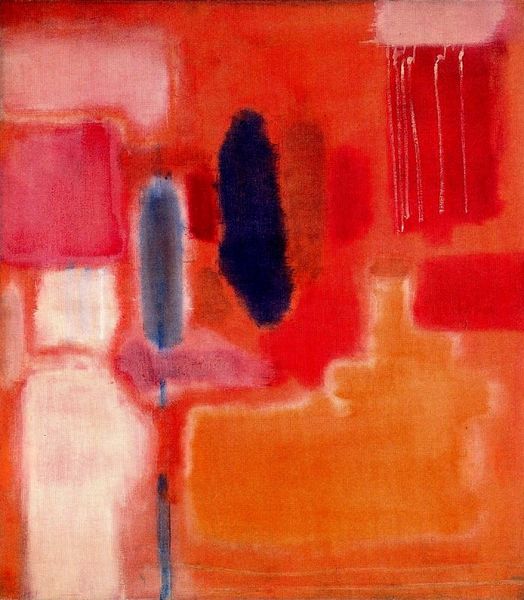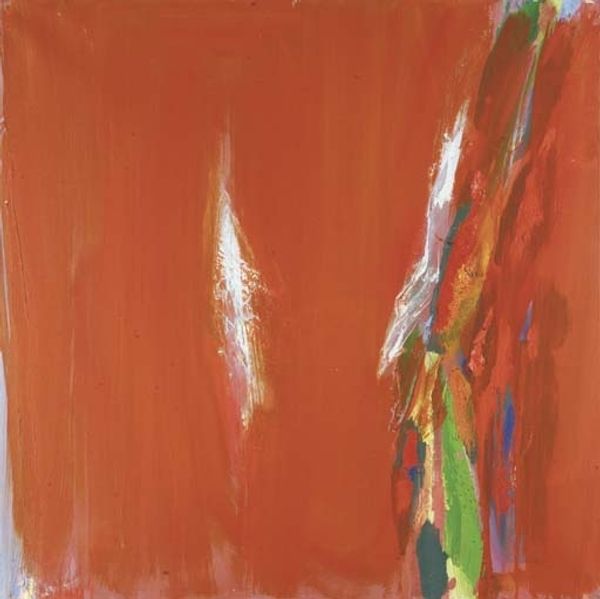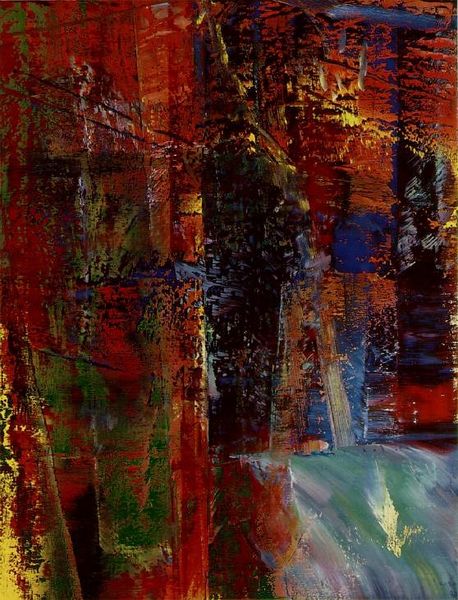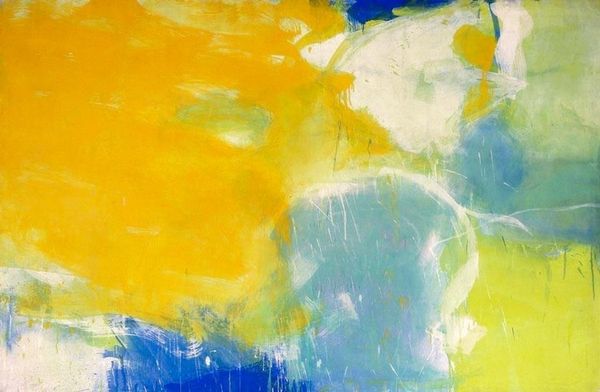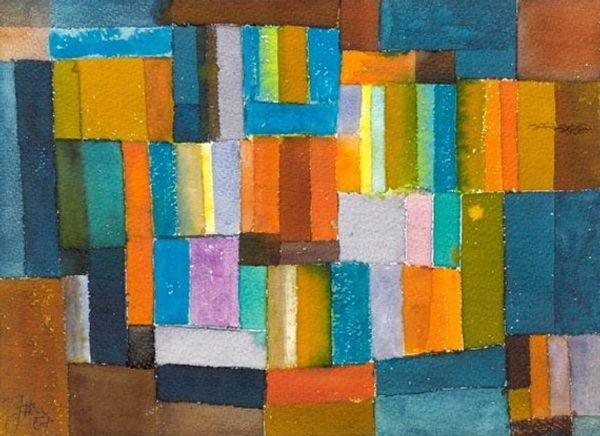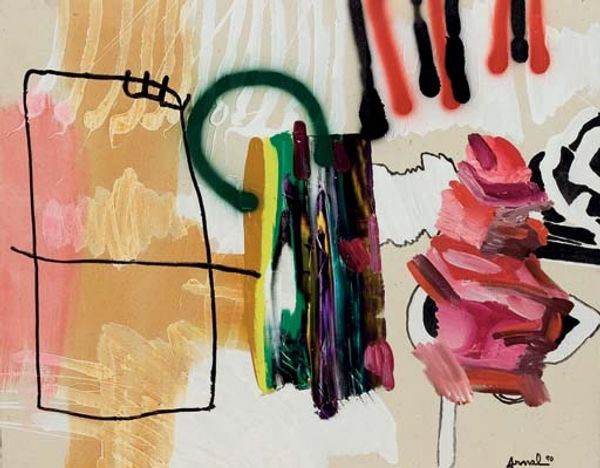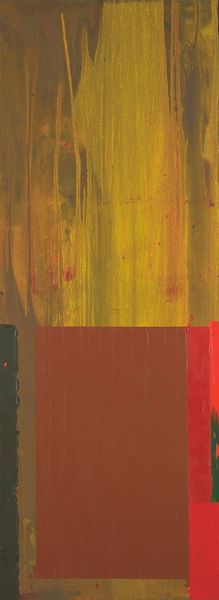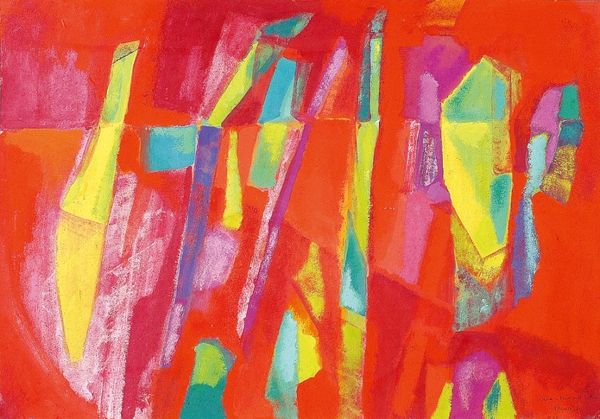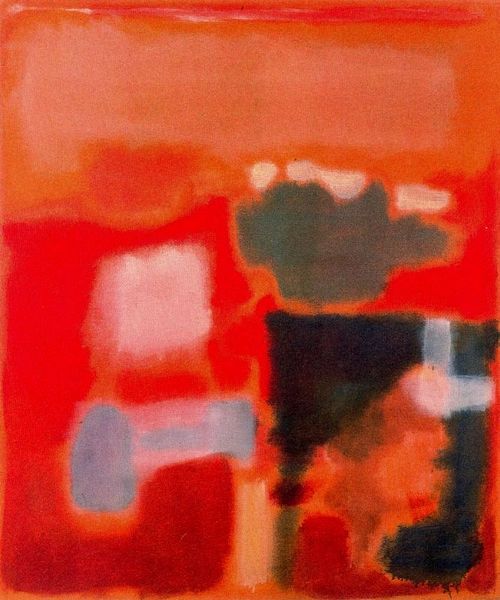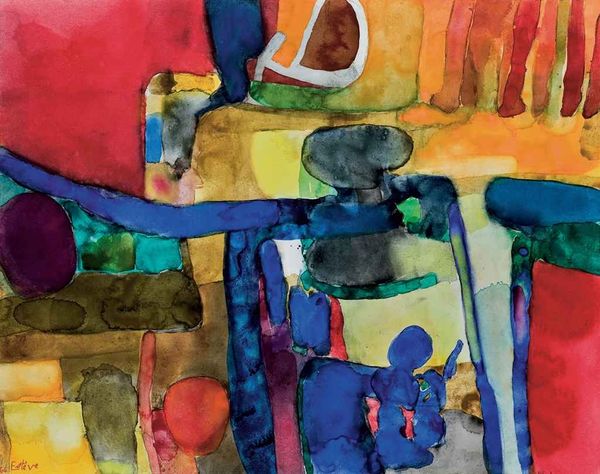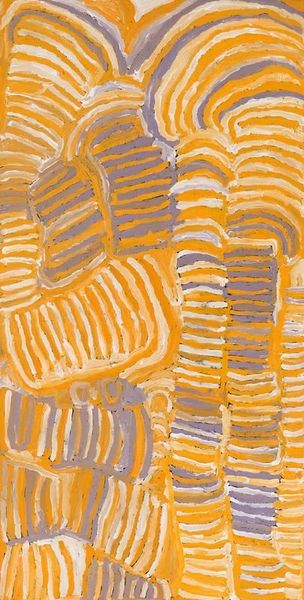
Copyright: Mark Rothko,Fair Use
Editor: Here we have Mark Rothko's "No. 19" from 1949, an oil painting currently residing at the Art Institute of Chicago. What strikes me immediately is the raw materiality of the canvas shining through the layers of paint. How do you interpret this work, especially concerning Rothko’s process? Curator: The materiality here is key. Look at how Rothko builds up these translucent layers of oil paint, almost staining the canvas rather than covering it. It's a move away from traditional easel painting towards a process more akin to dyeing or industrial staining. Consider the postwar context. There were technological advancements in paint production that gave Rothko these almost ethereal, floating color fields. Do you see any connections to other forms of material production at the time? Editor: I hadn't thought about the paint itself as an innovation. So the luminosity isn’t just artistic genius, but also a product of new materials and techniques… almost democratizing the artistic process, maybe? Curator: Precisely. It challenges the mystique of the "artist's touch." The focus shifts to the act of application, the pouring and layering, revealing the canvas as an active participant, a support system with its own inherent texture. The scale, too, becomes important—the canvases envelop the viewer, implicating them in the material experience. Rothko aimed to move away from pure visuality toward something tactile, a form of sublime manufactured sensation. Editor: It's interesting how a seemingly simple composition reveals a complex interaction of materials and industrial processes, something that might be overlooked at first glance. Thanks! Curator: Absolutely. Understanding the “how” often enriches our understanding of the “why” when it comes to art like this, changing the lens we view paintings through in the gallery and studio alike.
Comments
No comments
Be the first to comment and join the conversation on the ultimate creative platform.

